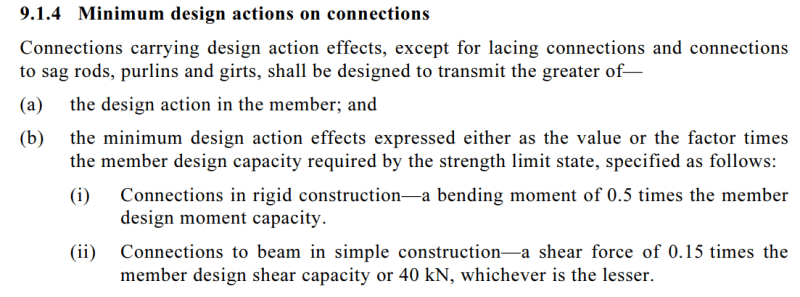It's not that it's odd or perverse...it's that the whole question is moot. Though the confusion comes from the code itself and the annoying reliance on tributary area. As driftLimiter pointed out, it's all about influence area. Unfortunately, however, the gods of ASCE 7 have decreed that we shall not consider influence area, we'll consider tributary area modified by some arcane factor that, when applied properly, is incidentally identical to influence area. (Alright, so it's a little easier to do it that way when you start dealing with continuous beam systems, but they should still address it directly as influence area.)
I disagree with drift's assessment of the influence area of the shear tab, though. Just as the resulting shear in the beam is subject to an influence area equal to the full length of the girder multiplied by the full distance from the girders on either side, so too is the influence area of the connection. That's because the influence area is the area in which a change in the applied load cause a change in the resisted load of the member under consideration. Any change in loading within the girder's influence area will cause a change in the loading on the girder and, subsequently, the moment, shear, and reactions of the girder. So 271828, you can undelete your post - I think your initial intuition was correct.
Remember, the uniform loads we apply aren't just about a uniform load. It's about applying an approximate load for analysis that will result in a sufficiently strong, stiff, and resilient structural system to resist the real loading that causes the worst probable conditions. Live load reduction is just a statistics game. What are the odds that we'll see XXpsf over YYYsf all at once? The bigger the YYY gets, the lower those odds and the less approximate loading we need to consider.


![[pipe] [pipe] [pipe]](/data/assets/smilies/pipe.gif)